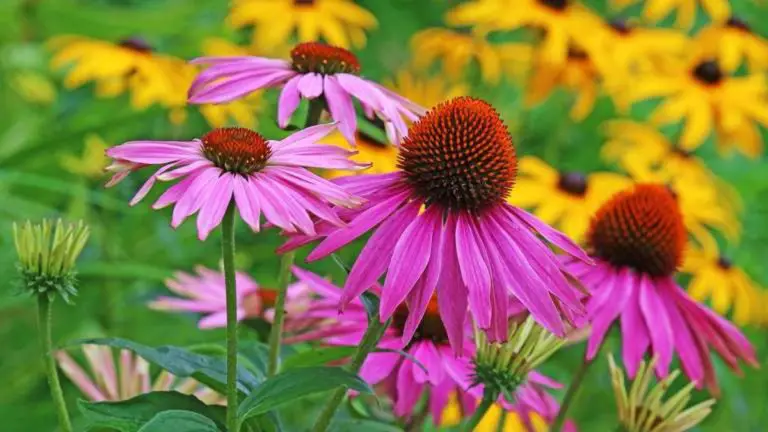Echinacea – benefits, uses, dosage, tips
If yellow or red coneflowers are suddenly no longer found in flower beds, this may be due, among other things, to the location and poor plant care.
Red coneflower (Echinacea purpurea) and yellow coneflower (Rudbeckia) are popular perennials in gardens for their colorful, showy flowers. But it is not uncommon for these plants to not return in all their splendor or to disappear completely. Before you suspect voles, this can have many different causes, but with the right choice of location, proper winter protection and good care, your heliotrope can shine in new splendor each year.
Four causes and measures for the disappearance of heliotrope
The two plants are closely related, but their life expectancy is not always very long: they typically flower every year for seven to ten years. Both varieties of heliotrope have similar requirements in terms of location, bed neighbors and care, and this is exactly where the reasons for the disappearance of perennials lie, but also the points thanks to which heliotropes can be preserved for years as plants. loyal perennials in flower.
- Do not divide the plant: Helianthemums tend to senesce, resulting in decreased flower vigor. Therefore, it is advisable to divide perennials approximately every five years in autumn or spring to extend their lifespan.
- Competition from other plants: Another possible cause of the disappearance of Rudebeckia and Echinacea is competition from other plants in the garden. If the heliotrope is surrounded by larger neighboring plants or aggressive weeds, this can affect its growth. Sufficient space between plants and regular weed removal can prevent this problem.
- Winter hardiness and poor location: Heliotrope, whether Rudebeckia or Echinacea, is generally very hardy, but extreme weather conditions can still cause damage. Problems with meadow plants in winter. If the location is not optimal, frost damage to the plant may occur. For example, if the heliotrope is in a place that is too humid, the standing water can damage the roots. So that the plants do not disappear after winter, it is recommended to choose a sunny location and calcareous, permeable soil.
- Lack of pruning: Plants need so much energy to produce seeds that they no longer have enough strength to survive the winter. That is why wilted flowers should be cut off: the leaves can remain on the plant during the winter and thus also protect the roots.
